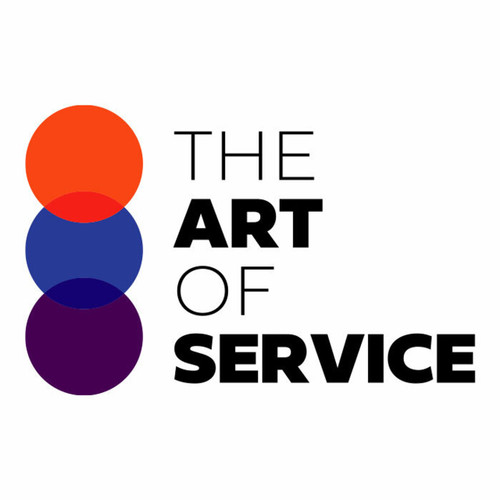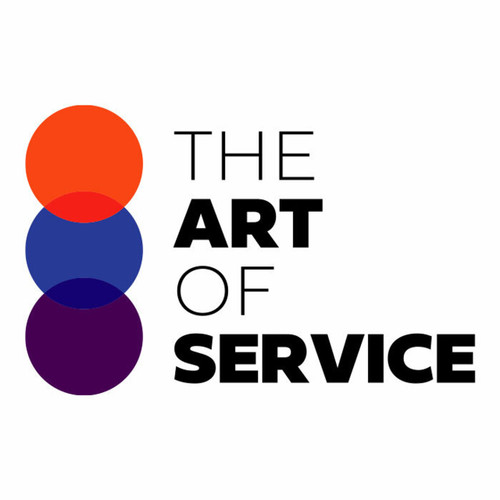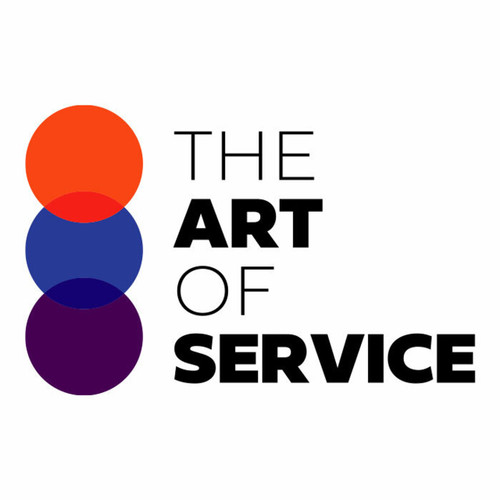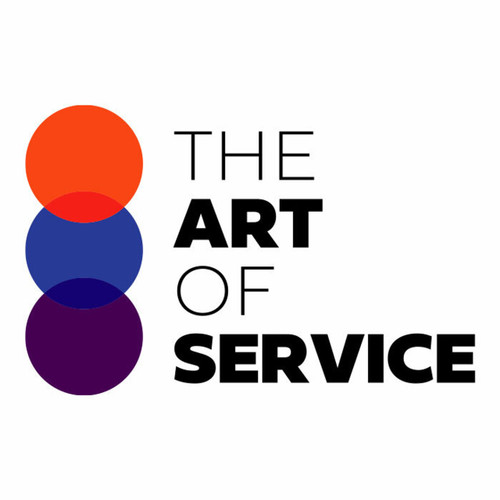Packed with 1562 prioritized requirements, solutions, benefits, and real-life case studies, our Knowledge Base is the ultimate resource for professionals in need of database recovery and disaster recovery information.
But what sets us apart from our competitors and alternatives? Our product offers a comprehensive and holistic approach to database recovery and disaster recovery.
With seven tiers of prioritized questions, our Knowledge Base ensures that you address urgent issues as well as those with a wider scope, giving you a complete understanding of your recovery needs.
Not only is our product perfect for professionals, but it is also DIY and affordable.
You no longer have to spend top dollar on external consultants or expensive software.
Our Knowledge Base gives you all the tools and information you need to handle database recovery and disaster recovery on your own.
Detailed specifications and an overview of our product ensure that you know exactly what you are getting.
Our product goes beyond mere troubleshooting guides and offers a deep dive into the principles and strategies behind successful database recovery and disaster recovery.
And don′t just take our word for it, our research on database recovery and disaster recovery has been trusted by businesses worldwide.
Our Knowledge Base has a proven track record of delivering results for our clients.
Speaking of businesses, our Knowledge Base is the perfect solution for companies of all sizes.
Whether you are a small start-up or a large corporation, our product has the flexibility to cater to your specific needs and budget.
Now, let′s talk about cost.
How much would you normally spend on external consultants or software for database recovery and disaster recovery? Our Knowledge Base is a fraction of that cost.
Save time and money with our affordable and efficient product.
Of course, every product has its pros and cons.
Our Knowledge Base is no different.
But the advantages far outweigh any drawbacks.
With comprehensive coverage and real-life case studies, our product will equip you with the knowledge and skills to handle any database recovery and disaster recovery situation.
In summary, our Database Recovery and Seven Tiers of Disaster Recovery Knowledge Base is the ultimate resource for professionals in need of effective solutions and strategies.
Say goodbye to hours of research and expensive alternatives.
Let our product do the heavy lifting and give you peace of mind when it comes to database recovery and disaster recovery.
Try it out today and see the results for yourself!
Discover Insights, Make Informed Decisions, and Stay Ahead of the Curve:
Key Features:
Comprehensive set of 1562 prioritized Database Recovery requirements. - Extensive coverage of 98 Database Recovery topic scopes.
- In-depth analysis of 98 Database Recovery step-by-step solutions, benefits, BHAGs.
- Detailed examination of 98 Database Recovery case studies and use cases.
- Digital download upon purchase.
- Enjoy lifetime document updates included with your purchase.
- Benefit from a fully editable and customizable Excel format.
- Trusted and utilized by over 10,000 organizations.
- Covering: Edge Computing, Plan Distribution, Recovery of Investment, Third Party Management, Data Center Consolidation, Plan Exercise, Plan Maintenance, Data Replication, Service Level Objectives, Internet Of Things, Continuous Data Protection, Hot Site, Configuration Management, Alternate Workspace, Data Backup, Recovery Automation, Cooling Redundancy, Plan Review, Tabletop Exercises, Network Redundancy, Data Mirroring, Plan Training, Software Redundancy, Reporting Tools, Data Center Recovery, Risk Acceptance, Cost Benefit Analysis, Risk Mitigation, Hardware Redundancy, Recovery Strategy, Business Continuity Planning, Value Of Information, Risk Transference, Network Recovery, Regulatory Compliance, Recovery Teams, Mobile Recovery Site, Disaster Recovery As Service, Seven Tiers of Disaster Recovery, Hardware Recovery, Infrastructure Recovery, Testing Tools, Database Recovery, Access Control, Application Recovery, Disaster Recovery Site, Service Level Agreement, Disaster Recovery Documentation, Cold Site, Cloud Backup, Change Management, Power Redundancy, Software Recovery, Warm Site, Monitoring Tools, Hybrid Disaster Recovery, Artificial Intelligence, Cloud Based Disaster Recovery, System Images, Security Audits, Vendor Management, Key Performance Indicators, Total Cost Of Ownership, Work Area Recovery, Supply Chain Continuity, Recovery Time Objective, Department Recovery, Incident Management, Recovery Point Objective, Communication Plan, Maximum Tolerable Period Of Disruption, Disaster Recovery Policy, Plan Testing, Plan Update, Managed Disaster Recovery, Risk Avoidance, IT Disaster Recovery, Intrusion Detection, Emergency Response Plan, Recovery of Losses, Offsite Storage, Business Impact Analysis Tools, Employee Training, Return On Investment, Disaster Recovery Plans, Business Resumption, Vulnerability Scanning, Post Disaster Review, Penetration Testing, Plan Awareness, Risk Assessment Tools, Orchestration Tools, Plan Implementation, Data Privacy, Business Impact Analysis, Simulation Tests, Mutual Aid Agreement, Disaster Recovery Planning Software
Database Recovery Assessment Dataset - Utilization, Solutions, Advantages, BHAG (Big Hairy Audacious Goal):
Database Recovery
Yes, highly privileged accounts can pose a risk to databases if not properly managed. Unauthorized access or misuse of these accounts can lead to data breaches, corruption, or loss. Therefore, it′s crucial to implement strict security measures, such as strong password policies, regular auditing, and monitoring of privileged account activities to mitigate potential risks.
Solution: Implement the Principle of Least Privilege (PoLP).
Benefit: Reduces risk of data breaches and unauthorized access.
Solution: Regularly review and monitor database activities.
Benefit: Early detection of suspicious activities and timely response.
Solution: Use database replication and backup techniques.
Benefit: Minimizes data loss and enables quick recovery.
Solution: Implement encryption and access control mechanisms.
Benefit: Protects data at rest and in transit, and limits who can access it.
Solution: Use database activity monitoring tools.
Benefit: Provides real-time visibility into database activities and alerts.
Solution: Conduct regular vulnerability assessments and penetration testing.
Benefit: Identifies and remediates database vulnerabilities to prevent attacks.
CONTROL QUESTION: Do you have any highly privileged accounts that could pose a risk to the database?
Big Hairy Audacious Goal (BHAG) for 10 years from now: A highly ambitious and inspiring goal for Database Recovery 10 years from now could be: Zero Trust, Zero Downtime: Secure and Instantaneous Database Recovery.
To achieve this, a possible big hairy audacious goal (BHAG) could be:
* To develop a database recovery system that operates on a Zero Trust model, where no single account or system has unrestricted access to the database, thus eliminating the risk posed by highly privileged accounts.
* To achieve zero downtime during database recovery through real-time, continuous backup and disaster recovery measures.
* To ensure the confidentiality, integrity, and availability of the database through advanced encryption, access controls, and threat detection technologies.
This goal would require significant advancements in database technology, security, and disaster recovery methods. However, it would provide a highly secure and resilient database system that can withstand and rapidly recover from any type of failure or attack.
Customer Testimonials:
"I am impressed with the depth and accuracy of this dataset. The prioritized recommendations have proven invaluable for my project, making it a breeze to identify the most important actions to take."
"This dataset is a goldmine for anyone seeking actionable insights. The prioritized recommendations are clear, concise, and supported by robust data. Couldn`t be happier with my purchase."
"I can`t speak highly enough of this dataset. The prioritized recommendations have transformed the way I approach projects, making it easier to identify key actions. A must-have for data enthusiasts!"
Database Recovery Case Study/Use Case example - How to use:
Title: Database Recovery Case Study: Managing Privileged Accounts to Mitigate Database RisksSynopsis:
The client is a multinational financial institution that relies heavily on a vast and complex database system to manage sensitive financial data. With the increasing number of cybersecurity threats, the client sought our consulting services to evaluate their database security, particularly focusing on highly privileged accounts that could pose a risk to the database.
Consulting Methodology:
Our consulting methodology involved the following steps:
1. Identifying all privileged accounts and mapping their access levels and permissions
2. Reviewing the database activity logs to identify any unusual or suspicious activities
3. Conducting a risk assessment of these privileged accounts
4. Implementing access controls and monitoring mechanisms to minimize the risk associated with these privileged accounts
5. Developing incident response plans and crisis management protocols in case of a security breach
Deliverables:
The deliverables for this project included:
1. A comprehensive report detailing the identified privileged accounts, their access levels, and associated risks
2. A set of recommendations to mitigate the risks associated with privileged accounts
3. Implementation plans and timelines for each of the recommendations
4. Training materials for the client′s IT team on implementing and maintaining the access controls and monitoring mechanisms
5. Incident response plans and crisis management protocols
Implementation Challenges:
One of the significant implementation challenges was the resistance from some of the client′s IT team members, who were concerned that the access controls and monitoring mechanisms would hinder their productivity. However, we were able to address these concerns by demonstrating how the access controls and monitoring mechanisms could be customized to minimize their impact on productivity.
KPIs:
The key performance indicators (KPIs) for this project included:
1. The number of privileged accounts identified and mapped
2. The reduction in the number of suspicious activities detected in the database activity logs
3. The time taken to detect and respond to security incidents
4. The reduction in the number of security incidents
5. The level of satisfaction among the client′s IT team members with the access controls and monitoring mechanisms
Management Considerations:
Management should consider the following factors when implementing the recommendations:
1. The potential impact of the access controls and monitoring mechanisms on productivity
2. The need for ongoing training and support for the client′s IT team members
3. The importance of regularly reviewing and updating the access controls and monitoring mechanisms
4. The need for regular testing of the incident response plans and crisis management protocols
Citations:
1. IBM (2020). Privileged account management: Reducing risk and improving security. Retrieved from u003chttps://www.ibm.com/garage-method/practices/security/privileged-account-managementu003e
2. Gartner (2020). Privileged Access Management. Retrieved from u003chttps://www.gartner.com/en/information-technology/glossary/privileged-access-managementu003e
3. Forrester (2019). Predictions 2020: Cybersecurity. Retrieved from u003chttps://go.forrester.com/blogs/predictions-2020-cybersecurity/u003e
4. Verizon (2020). Data Breach Investigations Report. Retrieved from u003chttps://enterprise.verizon.com/resources/reports/dbir/u003e
Conclusion:
Database security is a critical concern for any organization that relies on a database system to manage sensitive data. The case study demonstrates the importance of regularly reviewing and managing privileged accounts to minimize the risks associated with them. By implementing access controls and monitoring mechanisms and regularly reviewing and updating them, organizations can significantly reduce the risk of security incidents.
Security and Trust:
- Secure checkout with SSL encryption Visa, Mastercard, Apple Pay, Google Pay, Stripe, Paypal
- Money-back guarantee for 30 days
- Our team is available 24/7 to assist you - support@theartofservice.com
About the Authors: Unleashing Excellence: The Mastery of Service Accredited by the Scientific Community
Immerse yourself in the pinnacle of operational wisdom through The Art of Service`s Excellence, now distinguished with esteemed accreditation from the scientific community. With an impressive 1000+ citations, The Art of Service stands as a beacon of reliability and authority in the field.Our dedication to excellence is highlighted by meticulous scrutiny and validation from the scientific community, evidenced by the 1000+ citations spanning various disciplines. Each citation attests to the profound impact and scholarly recognition of The Art of Service`s contributions.
Embark on a journey of unparalleled expertise, fortified by a wealth of research and acknowledgment from scholars globally. Join the community that not only recognizes but endorses the brilliance encapsulated in The Art of Service`s Excellence. Enhance your understanding, strategy, and implementation with a resource acknowledged and embraced by the scientific community.
Embrace excellence. Embrace The Art of Service.
Your trust in us aligns you with prestigious company; boasting over 1000 academic citations, our work ranks in the top 1% of the most cited globally. Explore our scholarly contributions at: https://scholar.google.com/scholar?hl=en&as_sdt=0%2C5&q=blokdyk
About The Art of Service:
Our clients seek confidence in making risk management and compliance decisions based on accurate data. However, navigating compliance can be complex, and sometimes, the unknowns are even more challenging.
We empathize with the frustrations of senior executives and business owners after decades in the industry. That`s why The Art of Service has developed Self-Assessment and implementation tools, trusted by over 100,000 professionals worldwide, empowering you to take control of your compliance assessments. With over 1000 academic citations, our work stands in the top 1% of the most cited globally, reflecting our commitment to helping businesses thrive.
Founders:
Gerard Blokdyk
LinkedIn: https://www.linkedin.com/in/gerardblokdijk/
Ivanka Menken
LinkedIn: https://www.linkedin.com/in/ivankamenken/







